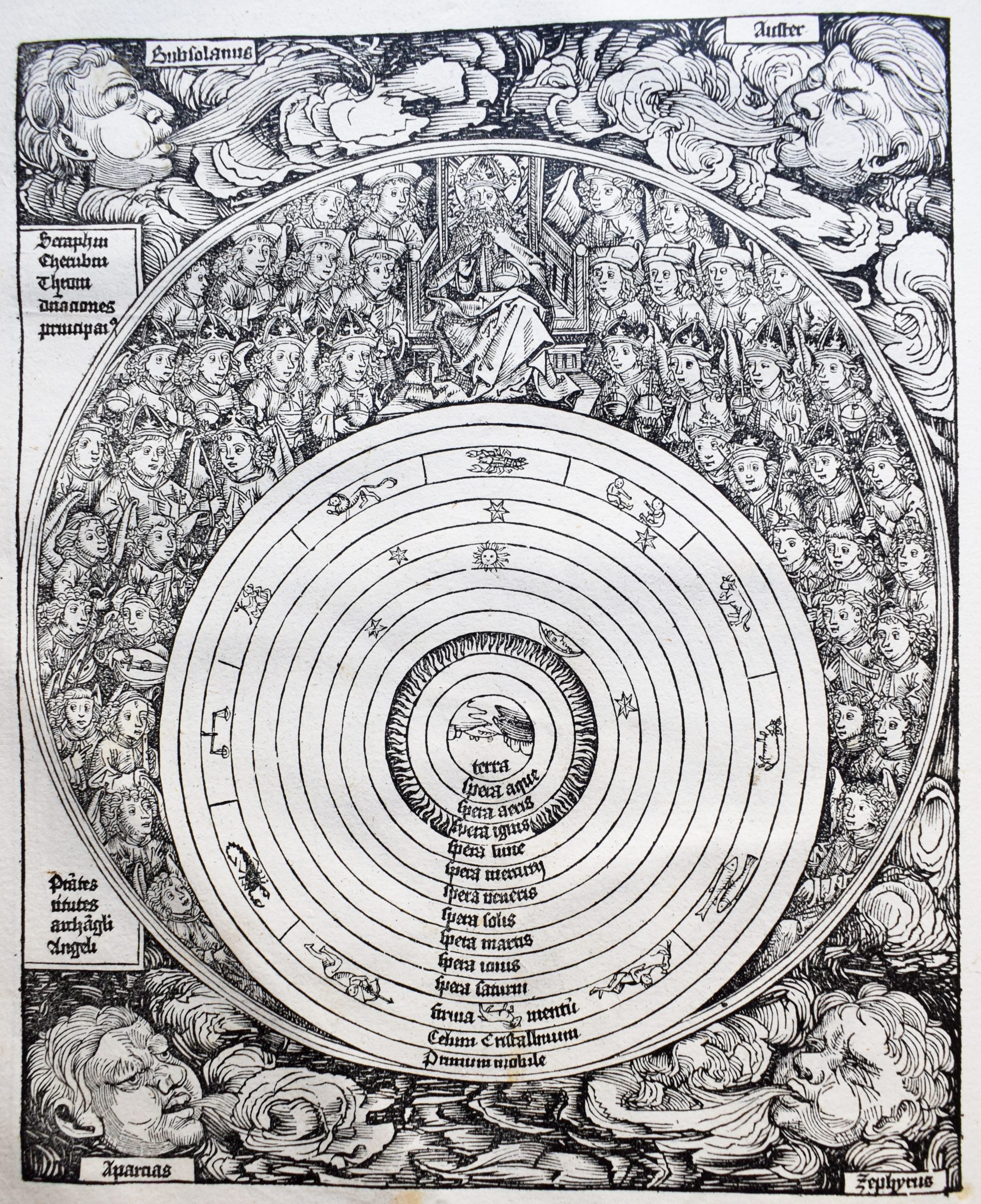The Montserrat library’s collection of incunabula contains, on the one hand, the ones from the press of the monastery, that began to work in the decade of 1490, and on the other hand non-montserratine incunabula from very different sources in Europe and Spain: Strasbourg, Augsburg, Barcelona, Basel, Zaragoza, Cologne, Florence, Freiburg, Seville, Valladolid, Lleida, Lyon, Milan, Naples, Nuremberg, Padua, Pamplona, Paris , Rome, Salamanca, Toledo, Toulouse, Valencia and Venice.
In total, between books and fragments, the library holds a collection of 392 incunabula.
The oldest incunabula in the library dates from 1467. It is the work De naturis rerum, by the theologian Raban Maur, printed in Strasbourg by Adolf Rusch.
The incunabula printed in Montserrat can be grouped into three sections according to their subject: liturgical books, books on spirituality and the works of García Ximénez de Cisneros.
The liturgical books were printed in Montserrat and distributed among different monasteries of the Benedictine Congregation of Valladolid. They were printed by the German printer Johannes Luschner. Highlights include the following works: a missal, a breviary and a procession for the Benedictine Congregation of Valladolid, and a book of songs, the Intonationes hymnorum.
Among the books on spirituality, the Regula of St. Benedict is worth mentioning. Other works on spirituality are the works of the author known as Pseudo Bonaventura, the Liber meditationum vitae Domini nostri Iesu Christi, the Incendium amoris, and De instructione novitiorum, the work of Gerardus de Zutphania,, Tractatus de spiritualibus ascensionibus and the l’Epistola de Gerson excitativa para el spiritual aprovechamiento
About the works of García Ximénez de Cisneros, who was Abbot of Montserrat, we highlight the Directorio de las horas canónicas in Latin and Spanish and his famous Exercitatorio de la vida espiritual, also published in Latin and Spanish, which became the head book of the benedictine congregation for more than three centuries and was printed in Latin, Catalan, Spanish, French, English, Italian and German.
The non-montserratine incunabula come partly from the old library and survived the fire of 1811. Among these copies recovered from the Napoleonic destruction, we can cite Libre dels àngels, , by Francesc Eiximenis, printed in Barcelona by Rosenbach in 1494.

Today’s incunabula have other origins and are largely the result of donations or acquisitions made during the period 1920-1930. For example, about 30 incunabula have come to us from the collection of Count of Aiamans. In 1930 several manuscripts and incunabula were bought from Burgo de Osma: can be identified by the exlibris and other handwritten notes they include and also by their bindings.
Following the catalog of Fr. Olivar, we can point out some incunabula that, due to their extraordinary rarity or beauty, deserve special attention, such as the l‘Antidotarium d’Arnau de Vilanova, the copy of the Paris edition of verse in 1499 the Panegyricum carmen in Robertum Severinatem, by Baptista de Màntua; the Elegantiorum epitoma in sex libros Lauretii Vallae by Aurelius Bienatus; the Diaeta salutis by Pseudo-Bonaventura; by García Gómez, Carro de dos vidas; by Georgius Bruxellensis Expositio super summulis Petri Hispani; the Epístola by Rabí Samuel; the copy of the Taxae Cancellariae Apostolicae, printed by Stephan Plannck and the other about the Taxae Poenitentiariae Apostolicae, printed by Eucharius; by Torquemada, Tractatus de aqua benedicta; by Nicolaus de Tudeschis, Super primo libro Decretalium, first and second part of the Venetian edition from 1482; the Translatio miraculosa ecclesiae beatae Mariae Virginis de Loreto. Also note the edition of the Libri chronicarum by Hartmannus Schedel in 1493 printed in Nuremberg, copies of the editions of the different parts of the Doctrinale by Alexander de Villa Dei, rare in the case of books intended for the use of schools and quickly shattered by the continued management of young students.

Tel.: 938 77 77 68
E-mail: biblioteca@abadiamontserrat.net
Adress: Abadia de Montserrat, Biblioteca
08199 Montserrat – Barcelona